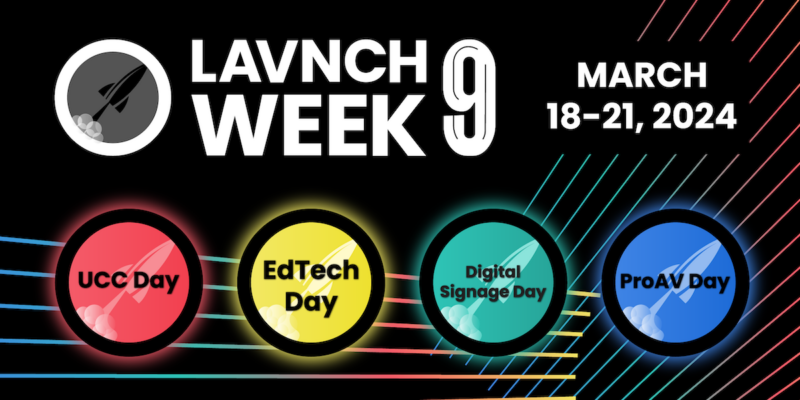The Digital Signage Warning!
By Gary Kayye, CTS
The DS market is dominated — and I mean dominated, by IT integrators, advertising agencies and even graphics designers who are all, quite honestly, wondering how this fell into their lap and counting the money, in most cases.
Trust me, it’s true. Before deciding to launch rAVe DS [Digital Signage] I did a ton of research in the market to understand what the heck was going on. In fact, we originally intended to launch it in September 2008, but delayed the launch so that I could learn it better — I wanted to know it inside and out.
And, now I think I do.
So what?
Well, if you knew what I knew, you wouldn’t say that. In the world of digital signage (actually, I like the term dynamic signage, but will call it digital signage until we convince the market otherwise), the AV market plays a very small part. We are losing major, major opportunities — daily — in this market.
That’s all going to stop. And, we’re going to help the AV world play in a big way. We’re going to teach you what the digital signage market is all about, how to play in it and, most importantly, how to make a lot of money in it.
Think you don’t need our advice and you’re already a DS player? Well, write to me, call me or e-mail me because I want to hear your story (and probably, write a column). But, I am betting if you’re in AV, you’re missing most of the opportunities — and, certainly, the most profitable ones.
For example, one of the market content delivery solutions is a company called VISIX. You may have even heard of them — they’re run by an AV industry veteran, Sean Matthews (Ed Matthews, the co-founder of Technical Industries in Atlanta — remember them? — his son is Sean). He’s an AV guy. He WANTS to see the ProAV integrators dominate digital signage.
And, his company is a major player in digital signage. Listen to these stats. In 2008, VISIX (www.visix.com) gained 197 new DS clients (end users to you), and just sold their 1000th system (each “system” has one server and many players, so they now deliver content to tens of thousands of endpoints). That’s a lot of DS gear and services. The key word there is “services” because they use a hybrid approach that combines hardware with what the IT industry would call a SaaS (Software as a Service) model where you make money selling the service, based on how many users or endpoints there are.Well, he competes with the like of Ronin, Scala, Broadsign, etc — all IT-based companies, some also using a SaaS model, serving the DS market. But, unlike them, he PRIMARILY sells and markets through the AV-channel. All well and good, right?
Not so fast. Listen to this: in 2008, only about 50 percent of these opportunities came from the AV channel. The other half was generated from… VISIX — that’s right, from the actual DS manufacturer. So, Sean did the “right thing” in that he brought the opportunity TO the AV integrator to ask them to deploy the installation that they, the manufacturer, found. In fact, 95 percent of all opportunities are pushed back to the AV integrators. Not many IT manufacturers would do this — trust me.
Anyway, back to the meat of this article. Of the 197 new clients, 173 of the systems were actually configured by VISIX themselves. Why? The AV integrator asked them to do it.
What’s the big deal? Well, the AV integrator sold the gear — the VISIX stuff, the Exton IP-Links, the wire and the content servers, but — now listen to this — VISIX did all the programming and software configuration (the intellectual property) on those 173 systems. What the heck? I know that AV integrators KNOW that the money’s in the service — you all understand the Crestron and AMX model, right? Sell the $1500 control system and pack it with $3500 worth of intellectual property (otherwise known as programming), and the IP is where you make all your profit.
But the AV integrators sold the gear and bailed on the intellectual property — ironically the highest margin and largest chunk of money in the long run.Not only that, but upon completing those 173 systems, VISIX signed software maintenance agreements (SMAs) with all of them AND even sold SMAs from last year’s installs too!
Now, this isn’t an easy sell. Like all service sales, it’s labor intensive and requires handholding (and consulting and training and access to a help desk, etc). VISIX initiated over 2800 remote support sessions in 2008 via WebEx, but that’s what they attribute to the high renewal rate of the SMAs.
And, remember, this is one example, of one company — it happens to be THE ONE that’s supporting the AV Channel. Imagine all the opportunities I am not telling you about — the one’s that went to IT companies or manufacturers targeting IT.
Look, the DS market is complicated. It’s not as simple as selling a flat screen monitor, a projector, a document camera or even a control system. But, it’s not rocket science — sorry, Sean. It’s simply an IT-enabled example of an AV-system. Content is generated with some sort of graphical (and scheduling) software, encoded with a content server, sent over a network or the Internet, decoded on the other end and played on a flat-screen (in most cases).
Doesn’t that sound real AV’ish to you? It does to me!
So, hang with us, subscribe to rAVe DS [Digital Signage] and we’ll get you up and running by the end of 2009. In fact, I will go as far as to say that if you will follow us through each issue in 2009, we (the AV channel) will have 20% of the market by year’s end — instead of less than 5% now.
More to come!
–Gary Kayye, rAVe Visionary and 20-year Industry Veteran





